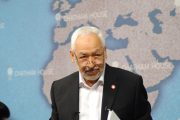Mohamed Yosry
The African continent was not devoid of terrorist groups prior to the emergence of ISIS; rather, armed factions loyal to al-Qaeda had already been deployed in many countries throughout the continent, and then ISIS appeared and impressed those factions with its actions in Syria and Iraq and its approach to establishing its “caliphate”.
Fascination and interests
This fascination with ISIS led many terrorist factions loyal to al-Qaeda to pledge allegiance to ISIS leader Abu Bakr al-Baghdadi, who was later killed in October 2019 in a US raid.
Several prominent groups each split into two factions, with one retaining its old loyalty to al-Qaeda and the other quick to pledge allegiance to Baghdadi, including Boko Haram, which was founded by Mohammed Yusuf in Nigeria in 2002, and the Somali Al-Shabaab movement founded in 2004.
It was not logical in theory for the leaders of terrorist organizations loyal to al-Qaeda in Africa to accept competition from a new group like ISIS, but a large portion of these African groups saw ISIS’s brute force and decided to benefit from the state of fascination that ISIS achieved and began coordinating with it on the ground. They then announced their pledge of allegiance to Baghdadi, as happened with Al-Shabaab and Boko Haram.
Consequently, ISIS also benefited from the capabilities of this wing in Africa, which strengthened its extensive structure in Africa, making the continent a more powerful alternative to its failed state in Iraq and Syria.
This interaction between ISIS and terrorist groups in Africa disproves the opinion of some observers that the state of fascination is in the process of disappearing after ISIS lost its main strongholds in Syria and Iraq and the announcement of its defeat in March 2019.
The reality on the continent reflects the error of the previous assumption, as violence has increased despite international efforts to counter terrorism in the tensest areas, especially in West and Central Africa, where the risk of integration between ISIS and al-Qaeda groups has increased.
Recently, the United Nations High Commissioner for Refugees announced that about 150,000 people in Burkina Faso fled during the month of February due to insecurity, pointing out that 765,000 people were displaced in Burkina Faso in 2019 due to the increase of terrorist attacks, especially in the border regions.
Meanwhile, a report by the Soufan Group revealed that the Ivory Coast, Benin, Ghana and Togo could be potential strongholds for ISIS expansion. The report added that ISIS is witnessing significant growth in light of the withdrawal of US forces from Africa and the weak capabilities of the African armies to confront the militants.
Ownerless land
Following ISIS’s collapse in Iraq and Syria, the geographical shift increased the level of violence in large areas of Africa, where the terrorist organization took “ownerless land” that had resulted from the phenomenon of failed or weak states whose institutions lost control of their lands. It thus became prepared to develop local militant groups and easily attracted elements returning from Syria and Iraq with high military and tactical experience.
Some groups succeeded early in achieving cooperation with ISIS, whether benefiting from its supporters on the ground or attracting those returning from its fallen “caliphate”, such as Abubakar Shekau, the current leader of Boko Haram who pledged allegiance to Baghdadi in 2015, announcing at the time that his group was part of ISIS in Central Africa.
Jihadist teams
The link between ISIS and al-Qaeda in Africa indicates both organizations’ orientation towards what “jihadist teams” instead of central groups as occurred in Asia over the past decades, making Africa the center of their operations. ISIS is also increasing its media interest in Africa, devoting full pages of its weekly magazine to its terrorist activity in Africa.
ISIS seeks to benefit from the experiences of the terrorist groups on the continent and to coordinate with them, relying on self-financing from within instead of the central funding model in Iraq and Syria.
On November 20, 2019, US Assistant Secretary of the Treasury for Terrorist Financing Marshall Billingslea said that ISIS’s financing will likely shift from a centralized financing system in Iraq and Syria to a system that is widely distributed following the killing of Baghdadi. He noted that ISIS still has the ability to access millions of dollars.








































admin in: How the Muslim Brotherhood betrayed Saudi Arabia?
Great article with insight ...
https://www.viagrapascherfr.com/achat-sildenafil-pfizer-tarif/ in: Cross-region cooperation between anti-terrorism agencies needed
Hello there, just became aware of your blog through Google, and found ...